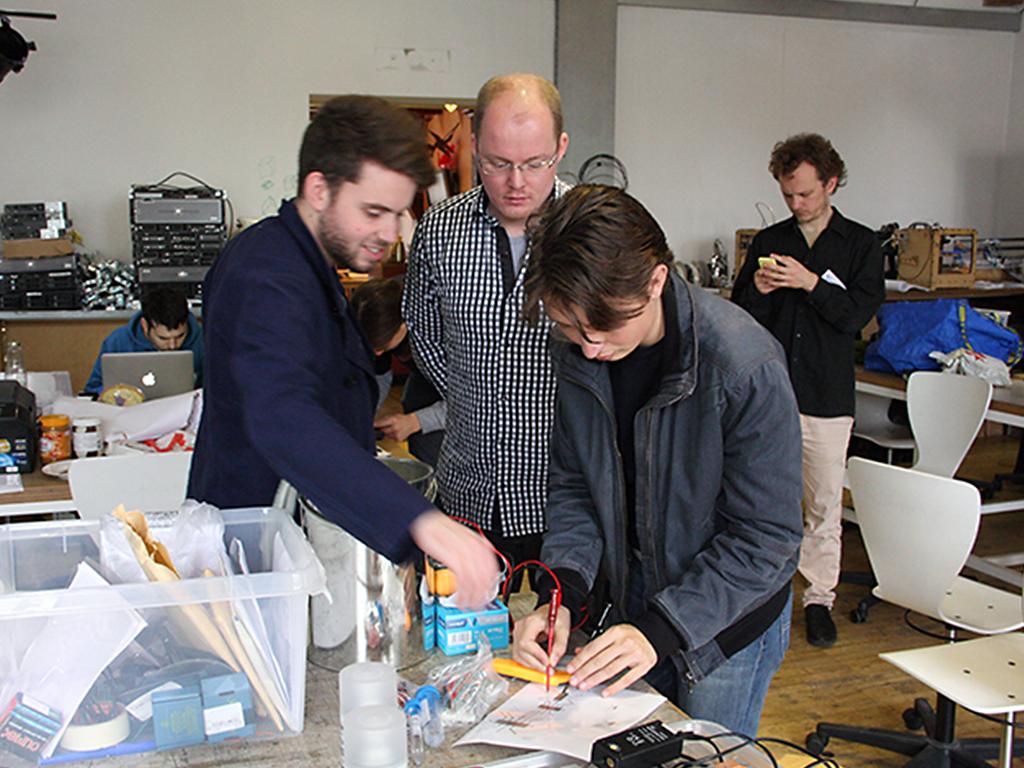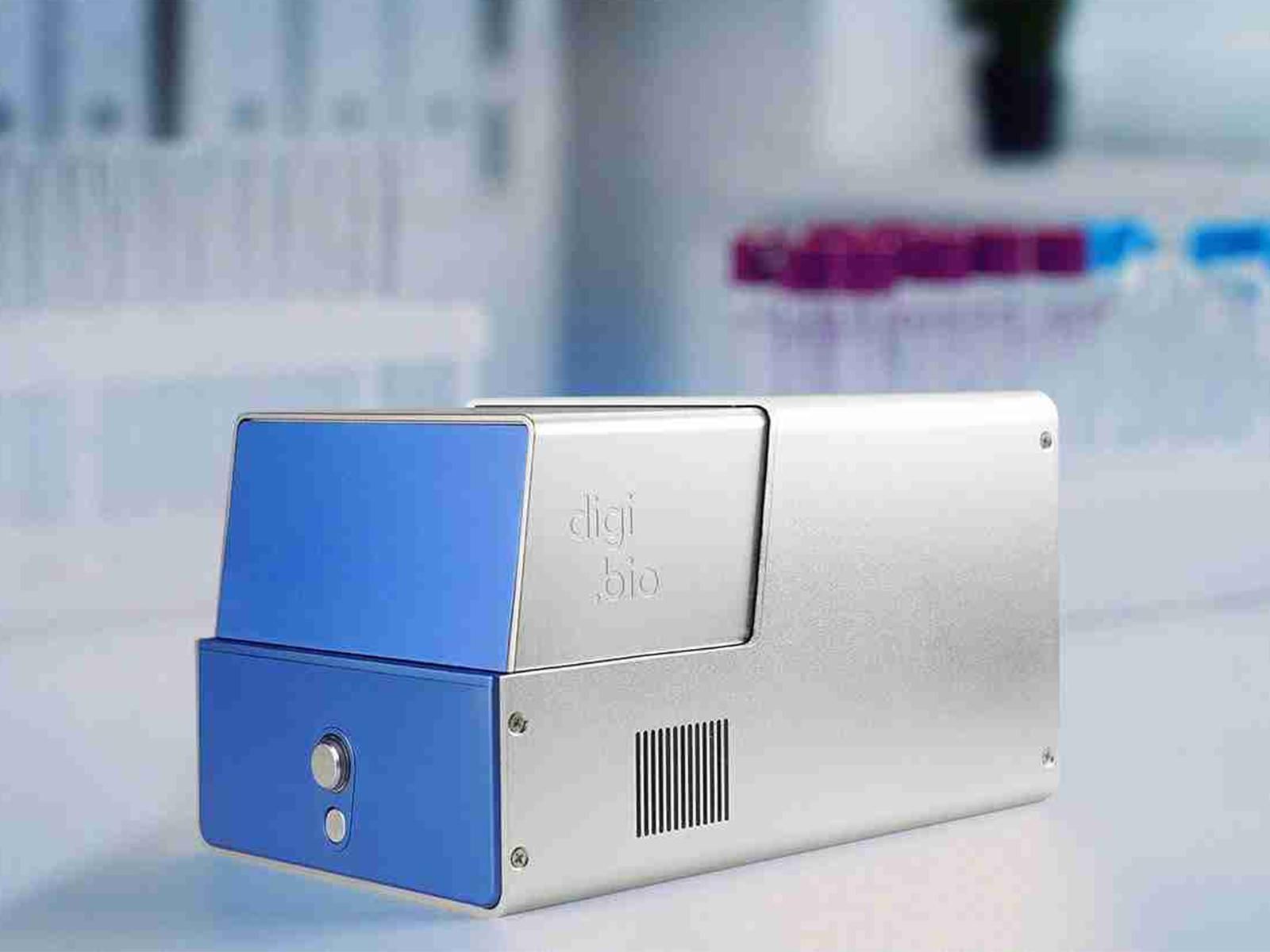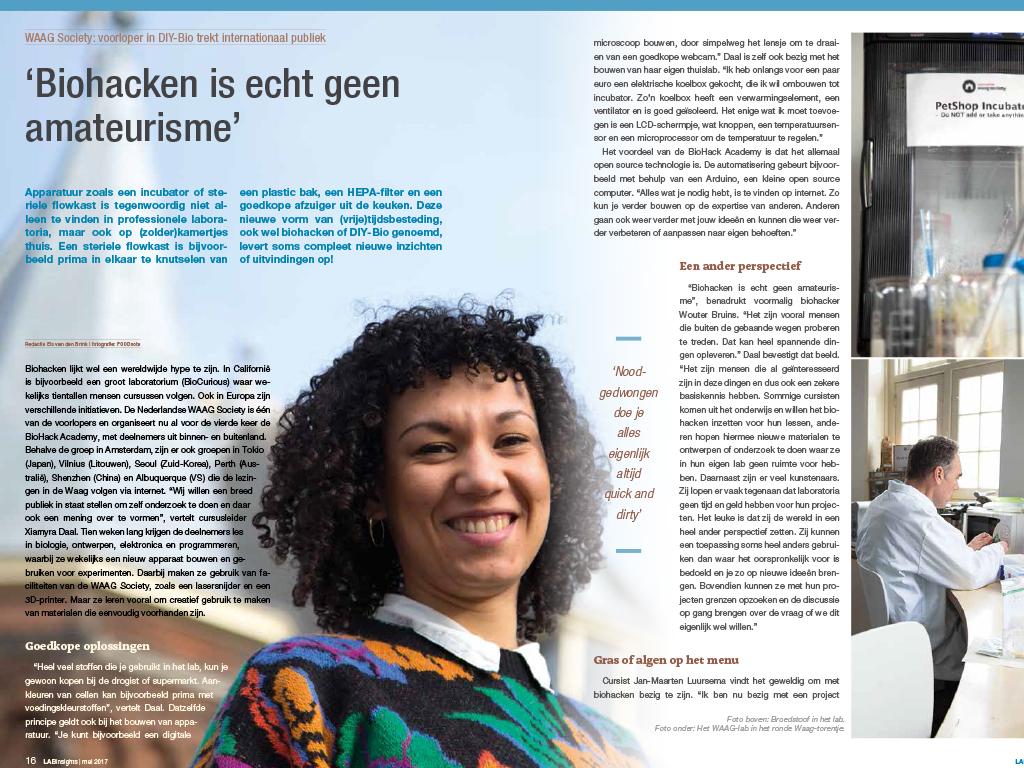During the weekend of 12-13 December, Waag opened its doors to the Digi.Bio team together with a group of biohackers, for a microfluidics hackathon. They are one step away from democratizing diagnostics by making them hackable not only for scientists, but also for amateurs interested in digital biology. The group of pioneers worked non-stop for two days on the digital microfluidics lab project and managed to get some droplets moving!
What is it?
So what does digital microfluidics (DMF) mean? This is an emerging technology for microfluidic manipulation that enables automation and control over discrete droplets on an array of electrodes through the application of electrostatic force (voltage). The droplet is placed on conductive substrate with dielectric coating and a top plate with hydrophobic coating. It is then manipulated through the use of high voltage power. This "lab-on-a-chip" system (which can be used for diagnostics, research, and synthetic biology) has so far lacked the scalability and the economical method for device fabrication that would make it accessible. Today’s printers and methods that are used for their development cost more than $40,000, which reduces it to a niche field.
Thanks to the Digi.Bio team and the hackathon participants, this is no longer the case! Everyone can use this advanced technology by simply using a $50 home printer and off-the-shelf silver ink cartridges. The hackathon focused on the development of the original idea of the Digi.Bio team, working in groups that researched different topics: chip design and materials, UI/control software, and HV supply and switch board.
Workflow
The workflow was split into three sections, allowing agile hands-on groups to work both separately and together. This gave them the chance to experiment the different research lines and test various hypotheses behind DMF device development. The chip design group tested the various printer line settings, materials, and fabrication methods (silver ink printing, engraving on ITO-coated PET). The UI group, on the other hand, developed user-friendly software for controlling the biochips (the interface design was in the end implemented on the chip design itself). And the HV supply group built the hardware controller for applying current to the printed electrodes and creating controlable movement of the droplets.
Eventually, they managed to move the droplets and control the system using a mobile device, giving us a glimpse of the coming future of open-source biotechnology! Alhough results allow us to dream of a world of democratized and more accessible research and biotechnology, there are still challenges ahead. The team must take these challenges into consideration to increase reliability and boost adoption. The next steps of the project, as discussed during the final presentation, will focus on further material testing for increased biochip performance, reducing voltage requirements, and involving scientists to transform users to designers.
The potential applications for such a rapid prototyping system and DMF devices has been matter of further discussions during the presentation. Some believe that such technology could have incredible applications in diagnostics methods in developing countries (i.e. water and soil pollution, patient diagnostics, etc.) and should be designed accordingly.
Although the Digi.Bio project will have to cope with future challenges, the hackathon participants (with their great energy and ideas) were able to demonstrate that printing with off-the-shelf DMF and device remote control is a reality. In the years to follow, those projects that are able to maintain a certain level of hackability and openness will become essential to the next wave of innovators and hackers. We hope to hear more from the Digi.Bio project and to witness the rise of new DMF devices and prototypes in the upcoming months.
You can check out some of the work that was done here:
https://youtu.be/dSr2-ZXU61s
https://youtu.be/E6yU25A3lLU
Stay tuned for the next hackathon, planned for February!
A special thanks to: the Digi.Bio team, Roland van Dierendonck, Dirk Broenink, Jan-Paul Bultmann, Mirela Alistar, Ruediger Trojok, Angel Imaz, Erwin Hoogerwoord and Arjen Pit, for giving your best and sharing your energy and passion to make this hackathon reality. Photos by Margot van Ham.



